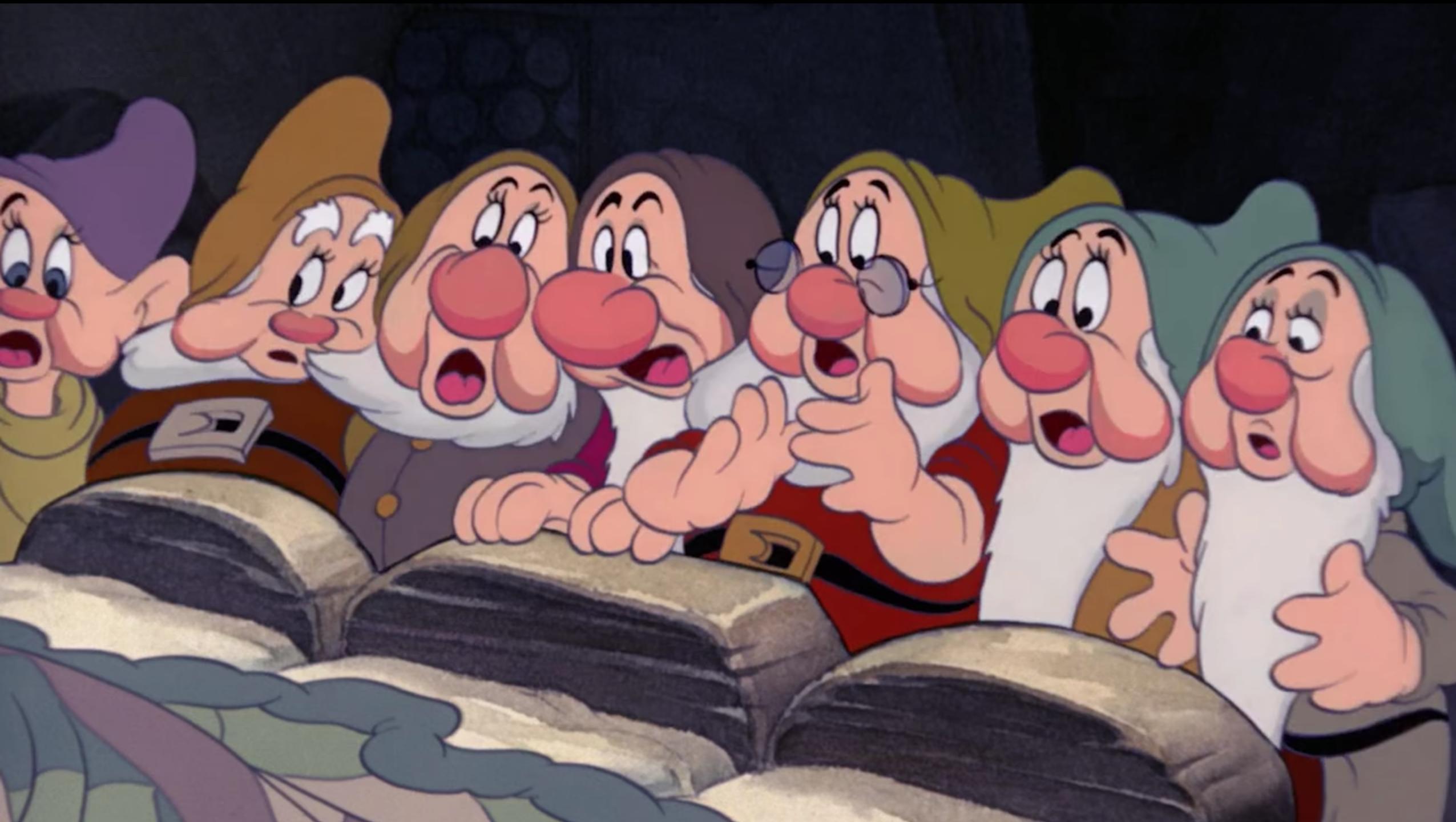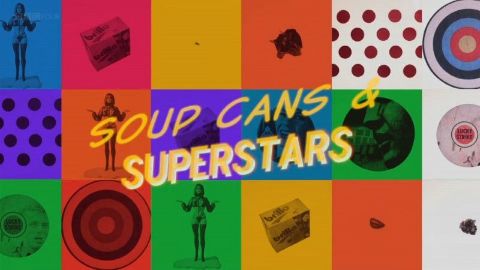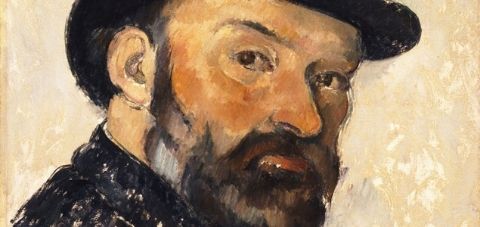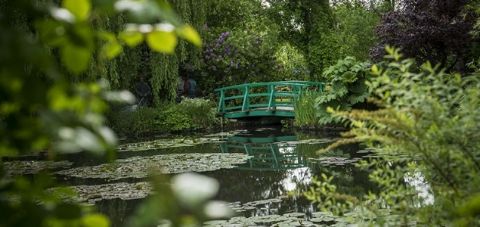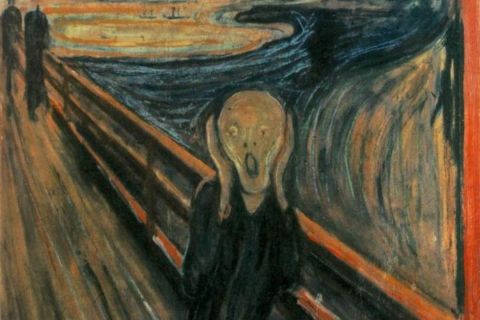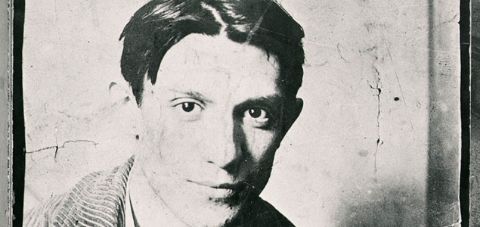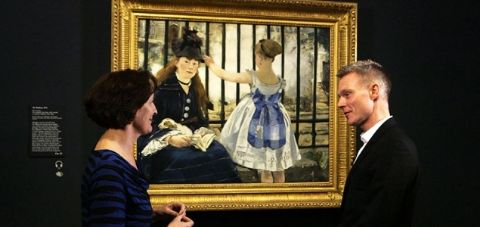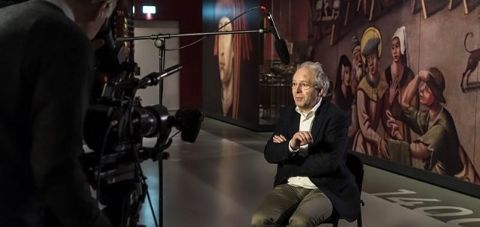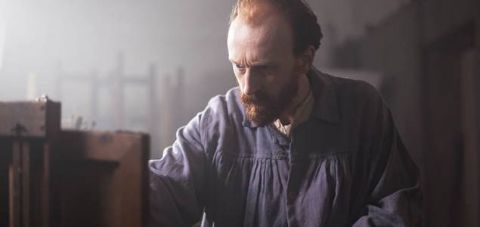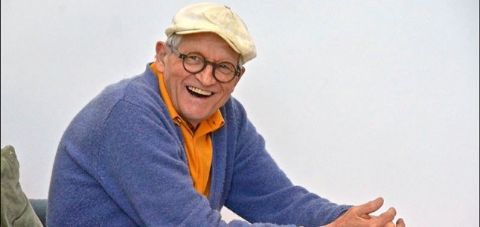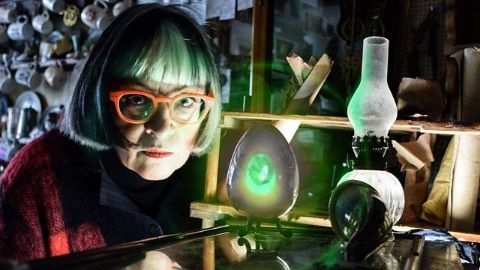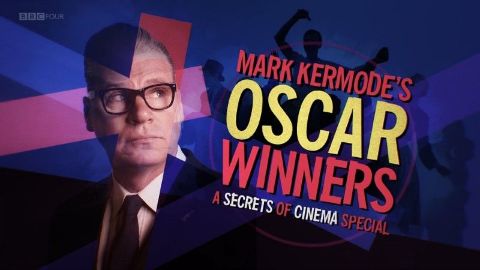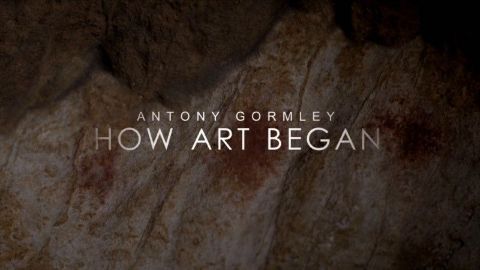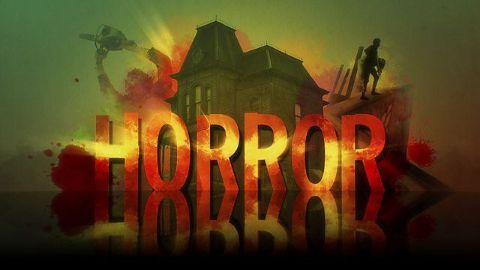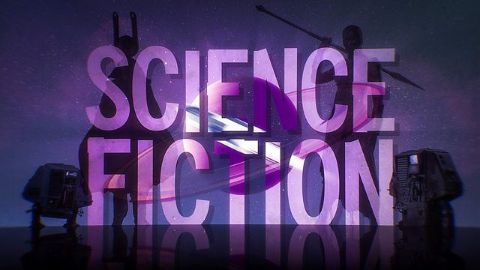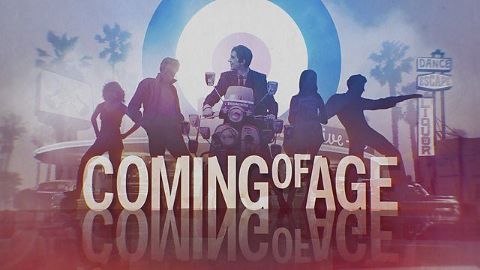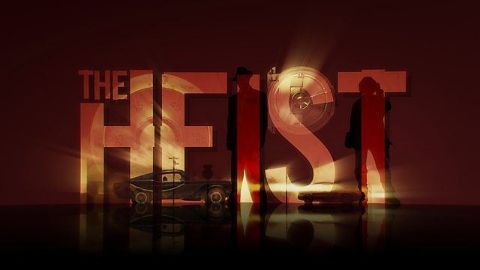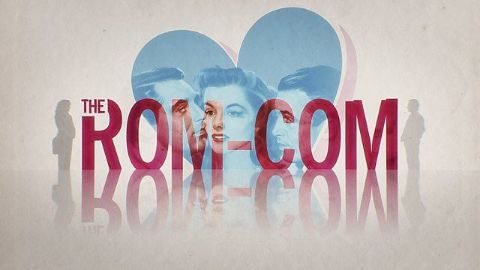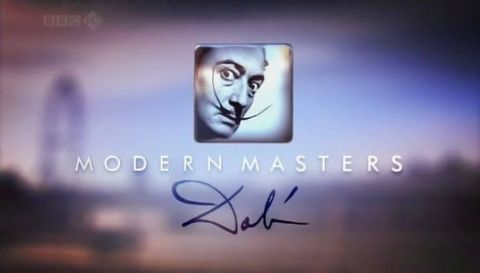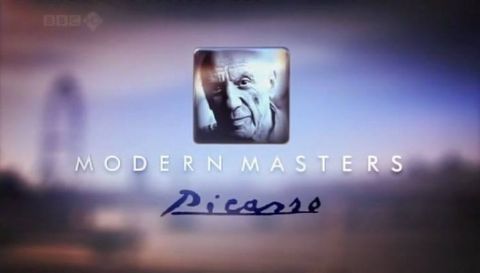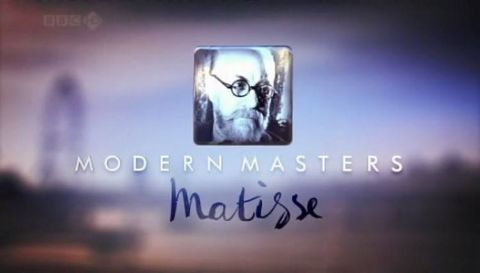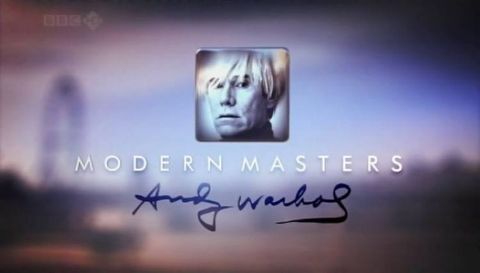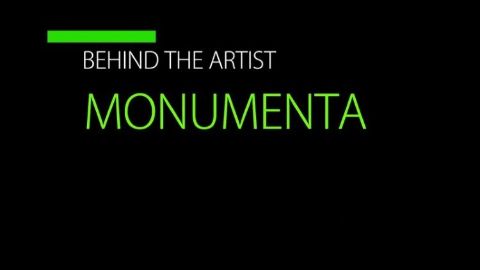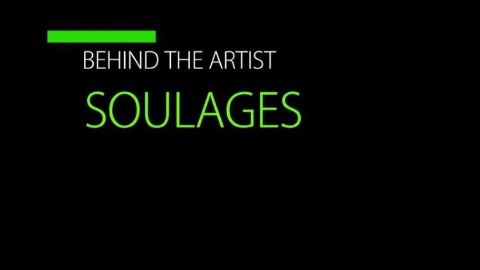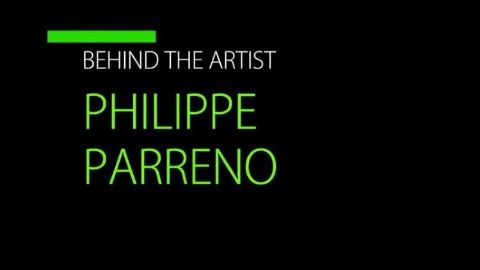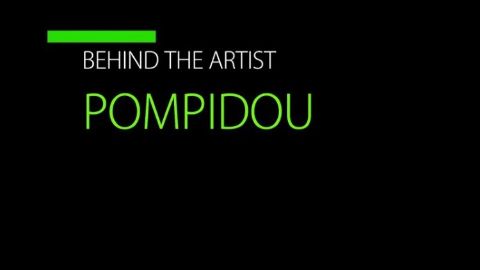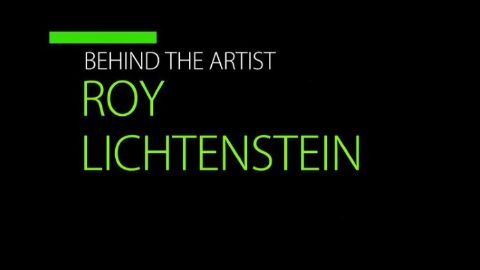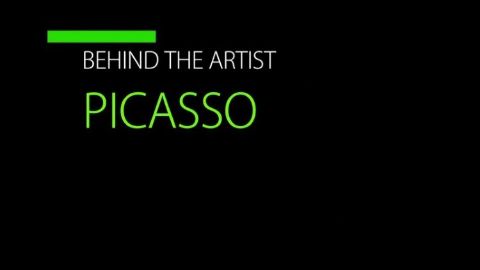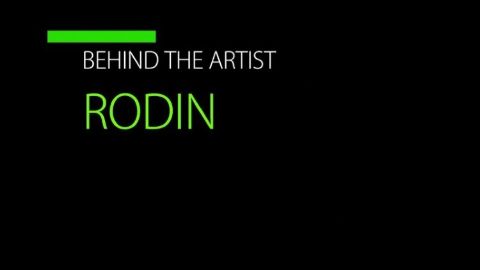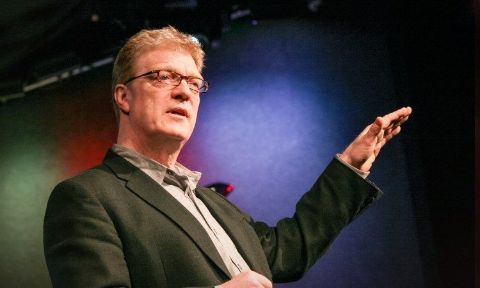CREATIVITY • 38 videos
Fairy tales have survived thousands of years for a reason. Explore their far-flung history and how the stories speak to fundamental human concerns.
S3E14 • Explained • 2021 • Creativity
Alastair Sooke champions pop art as one of the most important art forms of the 20th century, peeling back pop's frothy, ironic surface to reveal an art style full of subversive wit and radical ideas. In charting its story, Alastair brings a fresh eye to the work of pop art superstars Andy Warhol and Roy Lichtenstein and tracks down pop's pioneers, from American artists like James Rosenquist, Claes Oldenburg and Ed Ruscha to British godfathers Peter Blake and Allen Jones. Alastair also explores how pop's fascination with celebrity, advertising and the mass media was part of a global art movement, and he travels to China to discover how a new generation of artists are reinventing pop art's satirical, political edge for the 21st century.
2015 • Creativity
Described by Picasso and Matisse as 'the father of us all', Cezanne is considered one of the greatest artists of all time. Despite this, Paul Cezanne remains somewhat unknown, somewhat misunderstood. Yet one can't appreciate 20th-century art without understanding the genius of Cezanne and this film reveals the true man.
S3E5 • Great Art • 2019 • Creativity
This film takes a magical and widely travelled journey to discover how different contemporaries of Monet built and cultivated modern gardens to explore expressive motifs, abstract colour, decorative design and utopian ideas.
S3E4 • Great Art • 2019 • Creativity
In 2013, all of Norway celebrated the 150th anniversary of the birth of Edvard Munch, one of the towering figures of modern art. It was hailed a 'once-in-a-lifetime show'. This film goes behind the scenes to show the process of putting the exhibition together, as well as providing an in-depth biography of a man who lived from the mid-19th century right through to the German occupation of Norway in the Second World War.
S3E3 • Great Art • 2019 • Creativity
Discover Spain's celebrated artist with this cinematic tour de force based on the National Gallery's blockbuster exhibition Goya: The Portraits. The film uses the exhibition to look in depth at Goya's eventful life and, through extensive location footage and Goya's revealing letters, the film builds a fascinating portrait of the painter and the extraordinary world he painted.
S3E2 • Great Art • 2019 • Creativity
Pablo Picasso is one of the greatest artists of all time. But where did this all begin? What made Picasso in the first place? Young Picasso visits Malaga, Barcelona and Paris, and explores their influence on Picasso, focusing on specific artworks from these early years - up to the ground-breaking and hugely significant Les Demoiselles d'Avignon. How did he rise to such great heights?
S3E1 • Great Art • 2019 • Creativity
Gillian Anderson narrates the story of how American artists, inspired by French masters, created an art movement which lasted for 40 years.
S2E5 • Great Art • 2018 • Creativity
Focuses on the sell-out exhibition at The Royal Academy of Arts, depicting the craft of one of the all-time great artists, the 'father of modern art', Edouard Manet. Spanning this enigmatic and, at times, controversial artist's career, the programme gives a fascinating exploration and detailed biography of the momentous painter and his environment in a rapidly changing 19th-century Paris.
S2E4 • Great Art • 2018 • Creativity
After 500 years Bosch's paintings still shock and fascinate us, but what inspired the man behind these haunting works? Where did his unconventional and timeless creations come from? How did he bridge the medieval and Renaissance world? Why do his strange and fantastical paintings resonate with people now more than ever? Discover the answers to these questions and more with this remarkable documentary, presented by Tim Marlow.
S2E3 • Great Art • 2018 • Creativity
Vincent van Gogh's life has long captured the imagination, but who was he really? Tim Marlow delves into his fascinating and sometimes deeply troubled world.
S2E2 • Great Art • 2018 • Creativity
Widely considered Britain's most popular artist, David Hockney is a global sensation with exhibitions in London, New York, Paris and beyond, attracting millions of visitors worldwide. Now entering his ninth decade, Hockney shows absolutely no evidence of slowing down or losing his trademark boldness. Featuring intimate and in-depth interviews with Hockney himself, this revealing documentary captures the voice of the artist over five years and focuses on two of his blockbuster exhibitions.
S2E1 • Great Art • 2018 • Creativity
Philippa Perry explores the 1890s, a decade in which the invention of motion pictures went hand in hand with a deep belief in the paranormal.
S1E3 • Victorian Sensations • 2019 • Creativity
As the red carpet season reaches its climax, Mark Kermode turns his keen eye and sharp wit on past winners of the most prestigious awards of all. What gave them the edge over their rivals? Mark shows that, despite their apparent differences, Oscar-winning films have more in common than you might think. Certain kinds of film recur, such as war, social justice and the all-singing, all-dancing extravaganza. But, as Mark explains, it’s not just about your choice of subject; it's how you treat it that counts. In a special show that ranges from the earliest awards winners to the most recent victors, Mark reveals the films that laid down the template for cinematic glory, celebrates the classics that have endured and savours some of the movies’ most acclaimed performances.
Why do humans make art? When did we begin to make our mark on the world? And where? In this film, Britain's most celebrated sculptor Antony Gormley is setting out on a journey to see for himself the very beginnings of art. Once we believed that art began with the cave paintings of Ice Age Europe, tens of thousands of years ago. But now, extraordinary new discoveries around the world are overturning that idea. Antony is going to travel across the globe, and thousands of years back in time, to piece together a new story of how art began. He discovers beautiful, haunting and surprising works of art, deep inside caves across France, Spain and Indonesia, and in Australian rock shelters. He finds images created by hunter-gatherers that surprise him with their tenderness, and affinity with the natural world. He discovers the secrets behind the techniques used by our ancestors to create these paintings. And he meets experts making discoveries that are turning the clock back on when art first began.
2019 • Creativity
Mark turns to horror and shows how film-makers have devilishly deployed a range of cinematic tricks to exploit our deepest, darkest and most elemental fears. He explores the recurring elements of horror, including the journey, the jump scare, the scary place, the monster and the chase. He reveals how they have been refined and reinvented in films as diverse as the silent classic The Phantom of the Opera, low-budget cult shockers The Texas Chain Saw Massacre and The Evil Dead, and Oscar-winners The Silence of the Lambs and Get Out. Mark analyses the importance of archetypal figures such as the clown, the savant and the 'final girl'. And of course, he celebrates his beloved Exorcist films by examining two unforgettable but very different shock moments in The Exorcist and The Exorcist III. Ultimately, Mark argues, horror is the most cinematic of genres, because no other kind of film deploys images and sound to such powerful and primal effect.
Part 5 • Mark Kermode's Secrets of Cinema • 2018 • Creativity
This time Mark explores the most visionary of all genres - science fiction, and shows how film-makers have risen to the challenge of making the unbelievable believable. Always at the forefront of cinema technology, science fiction films have used cutting-edge visual effects to transport us to other worlds or into the far future. But as Mark shows, it's not just about the effects. Films as diverse as 2001, the Back to the Future trilogy and Blade Runner have used product placement and commercial brand references to make their future worlds seem more credible. The recent hit Arrival proved that the art of film editing can play with our sense of past and future as well as any time machine. Meanwhile, films such as Silent Running and WALL-E have drawn on silent era acting techniques to help robot characters convey emotion. And District 9 reached back to Orson Welles by using news reporting techniques to render an alien visitation credible. Mark argues that for all their spectacle, science fiction films ultimately derive their power from being about us. They take us to other worlds and eras, and introduce us to alien and artificial beings, in order to help us better understand our own humanity.
Part 4 • Mark Kermode's Secrets of Cinema • 2018 • Creativity
This time Mark explores the genre that captures the joy and pain of growing up - the coming-of-age movie. It is the most universal of all genres, the one we can all relate to from our own experience, yet it can also be the most autobiographical and personal. Film-makers across the world repeatedly return to core themes such as first love, breaking away from small-town life and grown-ups who don't understand. And wherever and whenever they are set, these stories are vividly brought to life using techniques such as casting non-professional actors, camerawork that captures a child's-eye view and nostalgic pop soundtracks. From Rebel without a Cause to Lady Bird by way of Kes, Boyz n the Hood and This Is England, Mark shows how recurring sequences like the makeover and the group singalong, and characters like the gang and mentor figure, have helped create some of the most moving and resonant films in cinema.
Part 3 • Mark Kermode's Secrets of Cinema • 2018 • Creativity
This time it is the turn of the heist movie, with its unique combination of suspense and action. Whether it is the big bank job or netting a fortune in diamonds, why, asks Mark, do otherwise law-abiding audiences find themselves rooting for robbers and even killers? More than any other genre, the heist movie plays with our sympathies, encouraging us to identify with characters we would run a mile from in real life. From The Asphalt Jungle to Ocean's Eleven by way of The Italian Job and even The Wrong Trousers, Mark shows how recurring character types, such as the mastermind, and sequences like the planning scene and the getaway, draw us into the big score. And he demonstrates how recent hits like Inception, The Wolf of Wall Street and Baby Driver have pushed the conventions of the heist in thrilling new directions. At the box office, at least, crime really does pay.
Part 2 • Mark Kermode's Secrets of Cinema • 2018 • Creativity
Mark begins with one of the most popular genres of all. They are sometimes sneered at by critics, but from the 1930s to the present day, many of our most beloved movies have been romantic comedies. From Bringing Up Baby and The Lady Eve by way of Annie Hall, When Harry Met Sally and Pretty Woman to Love, Actually (a particular Kermode favourite) - as well as recent hits such as The Big Sick and La La Land - Mark examines the cinematic tricks and techniques involved in creating a classic romcom. Mark celebrates old favourites, reveals hidden treasures and springs plenty of surprises. Examining films from Hollywood to Bollywood via other gems of world cinema, he reminds us how, much like love itself, the art of the romantic comedy is international.
Part 1 • Mark Kermode's Secrets of Cinema • 2018 • Creativity
Salvador Dali was art's greatest clown, but was he also one of its great geniuses? Journalist Alastair Sooke traces the life and work of the popular surrealist artist travelling throughout Europe and America. From his origins in turn of the century Spain, to his high jinx in New York in the 1970s, Sook reveals this artist's fascinating life story and explains the thinking behind and impact of his most famous works. Talking to Dali fans from Mighty Boosh comedian Noel Fielding to contemporary artist Jeff Koons, Sooke reveals the pervading influence of Dali and his brand of surrealism. Featuring testimonies from film giant Alfred Hitchcock and excerpts from the film Dali made with Walt Disney, Destino, as well as looking at contemporary advertising, this programme shows how the hand of Dali has touched almost every aspect of popular culture.
S1E4 • Modern Masters • 2010 • Creativity
The life of Pablo Picasso is an exciting story of rebellion, riches, women and great art. In this episode of a four-part series dedicated to Modern Art, journalist Alastair Sooke travels through France, Spain and the US to see some of the artist's great works and recount tales from his life story. Talking to architects, fashion experts and artists, he investigates how Picasso's influence, particularly that of his Cubist work, continues to pervade modern life today, in the shape of buildings, interior design, clothes and of course contemporary art. Tracking down former Picasso model Sylvette David to her current home in Britain, he also hears how Picasso's images of her inspired the look of screen siren Brigitte Bardot.
S1E3 • Modern Masters • 2010 • Creativity
This programme is the second in a series looking at four great modern artists: Warhol, Matisse, Picasso and Dali. Tracing the biography of this fascinating artist, and travelling through France, America and Russia, the programme explores some of the painter's greatest works. Sooke explains why Matisse's art is considered so great and also looks at how Matisse's brilliant use of colour and simplification of form continues to inspire illustrators, designers and of course artists today. Acknowledging the debt the famous couturier Yves St Laurent owed the painter, Sooke also talks to British designers Sir Paul Smith and Tricia Guild about their passion for Matisse, he travels to Utrecht to discover how even children's character Miffy the rabbit owes its origin to art, and reveals how logos and images as diverse as Apple's iPod advertising and even the 2012 olympic logo are inspired by the modern master.
S1E2 • Modern Masters • 2015 • Creativity
The first in a four-part series exploring the life and works of the 20th century's most important artists: Matisse; Picasso; Dali and Warhol. Art critic Alastair Sooke sets out to discover why these artists are considered so great and how they still influence our lives today. He begins with Andy Warhol, the king of Pop Art. On his journey he parties with Dennis Hopper, has a brush with Carla Bruni and gets to grips with Marilyn. Along the way he uncovers just how brilliantly Andy Warhol pinpointed and portrayed our obsessions with consumerism, celebrity and the media, and then went on to re-invent them.
S1E1 • Modern Masters • 2010 • Creativity
M.C. Escher is among the most intriguing of artists. In 1956 he challenged the laws of perspective with his graphic Print Gallery and his uncompleted master-piece quickly became the most puzzling enigma of modern art. Fifty years later, can mathematician Hendrik Lenstra complete it? Should he?
2007 • Creativity
"Monumenta" is an ephemeral art construction happening yearly since 2007, with art filling the vast space of the Grand Palais in Paris in a unique moment. This year the exhibit is the imaginary, complex world of two Russian artists, Ilya and Emilia Kabakov.
10 • Behind the Artist • 2016 • Creativity
Pierre Soulages, the painter of the anti-image, who uses a palette of black, is the subject of this fascinating documentary. The preeminent painter of contemporary France, his paintings are stark and plain and painted with unconventional materials.
9 • Behind the Artist • 2016 • Creativity
Phillippe Parreno has radically redefined the exhibition experience. Rather than as a collection of individual works, Parreno sees an exhibit as a coherent whole and works in many different media including film, text, sculpture and drawing.
8 • Behind the Artist • 2016 • Creativity
Take a time trip to France in the 1960's-- student revolts! Pop Art! -- And meet Georges Pompidou, a bank director who became PM of France. His vision of modernizing France pushed the avant garde design of the Paris art and cultural center which is now home to the modern arts of France.
7 • Behind the Artist • 2016 • Creativity
Approaching 40 years of age, Roy Lichtenstein finally finds his artistic inspiration for his unique works in his son's comic books and begins the Pop Art movement. With interviews and footage from the mid-twentieth century, see the evolution of this influential modern artist.
6 • Behind the Artist • 2016 • Creativity
Picasso - You think you know him, but do you really? Take an in-depth look at his art, his turbulent life, and the lasting impact he made on the art of the 20th Century.
4 • Behind the Artist • 2016 • Creativity
Auguste Rodin followed his intuition and was inspired as well by the relationships with his models. Behind each of his works there was either a scandal or a controversy. He left us "The Thinker" and "The Kiss", two of the most famous sculptures in the world. Here is his story.
2 • Behind the Artist • 2016 • Creativity
Sir Ken Robinson makes an entertaining and profoundly moving case for creating an education system that nurtures (rather than undermines) creativity.
TED • 2006 • Creativity
Animated on location at a beach, in snow, and underwater, this stop-motion short details a transoceanic conversation between two characters via objects in a bottle.
Something you have felt for many years, but didn't quite know what it was...
2012 • Creativity
Benjamin Zander has two infectious passions: classical music, and helping us all realize our untapped love for it — and by extension, our untapped love for all new possibilities, new experiences, new connections.
2008 • Creativity
